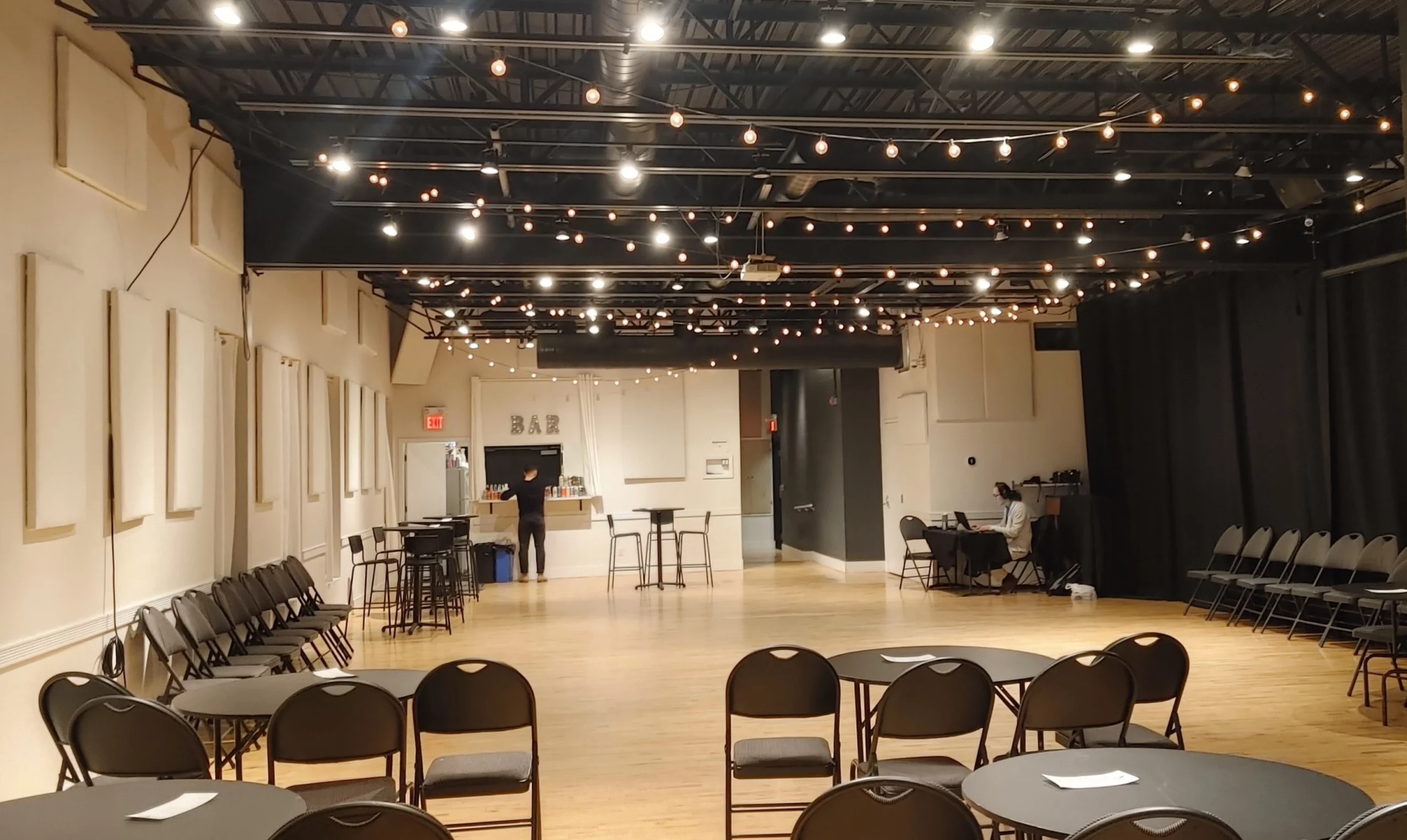Wearing a button-up shirt, a waistcoat, and dress pants, I rubbed some warmth into my bare arms and walked into the Sugar Swing Ballroom. After ensuring I wasn’t leaving soggy footprints on the dancefloor, I picked a table and eagerly waited for people to arrive for the dance social.
I’d been interested in Sugar Swing even before I took on this story. Sugar Swing hosts events, teaches dance classes, and currently hosts dance socials on Fridays and Saturdays. Dance social participants first learn a short dance and can then dance until midnight. I’m a woefully bad dancer, so learning a simple dance routine that’d be used that same night seemed like the perfect fit for me.
If you’re debating trying out one of the many swing dance styles like I was, dance instructor Matthew Lloyd recommends jumping right into it. He’s been swing dancing since 2013 and started teaching at Sugar Swing around 2018.
“As far as dances go, it’s quite easy to learn. It’s very beginner friendly. You don’t have to have a partner, you don’t have to have decades of dance experience,” he explains.
While he loves swing dance itself and swing music, it’s the community at Sugar Swing that Lloyd appreciates most.
“Finding friends as an adult is hard when all you do is work,” says Lloyd. “[Sugar Swing] gave me a way to just meet other people. Being able to come and see familiar faces week after week is really, really nice.”
I’d soon be introduced to this social aspect myself. Closer to the lesson start time, people started to trickle in, but everyone mostly kept to themselves. Around 7:30 p.m., an instructor asked us to self-sort into leads and follows, meaning the leads were to direct the movements of their partners. After everyone learned a couple of basic steps, leads and follows paired up, and the distance began narrowing. It started with an unspoken icebreaker that I quickly adopted. Walk up to your partner. Smile, shake hands, and introduce yourself. Practice the steps as a team. Close it off with a thanks and a high five. Follows then rotate to the next lead and repeat the process.
“Swing dancing is first and foremost an African American dance. It was developed in Harlem, New York, specifically at the Savoy Ballroom, in the late 1920s, early 1930s…”
Matthew Lloyd, Sugar Swing dance instructor
As we learned to transform the basic steps into a small and partnered dance, our conversations grew more complex too. I’d explain that I struggled with learning choreography, and in turn, each of my partners patiently guided me through the steps. Gradually, I shifted from stumbling through the motions to dancing semi-smoothly. One person helped me master a twirl that I’d almost given up on.
When the lesson shifted over into the dance social, I felt okay inviting many of the friendly faces around me to dance. It also felt less daunting having casual conversations with the other participants. I had known I’d be dancing that night, but I didn’t realize I’d have a one-of-a-kind social experience as well.
Sugar Swing’s community-oriented atmosphere is no accident. Swing dancing has been social from the start, and Sugar Swing founder and director Birkley Wisniewski intentionally wove this into Sugar Swing’s ethos.
“I think that really came from the masters — the legends who were swing dancing in the 1930s and 40s,” he says.
Wisniewski says these include Frankie Manning, Norma Miller, Sugar Sullivan, and Barbara Billups. Billups and Sullivan continue to connect with new swing dance fans today. This past summer, Billups and Sullivan attended Beantown as special guests and taught at the Herräng Dance Camp.
“It doesn’t matter where you come from [or] what age you are … People are just welcome to come and have fun.”
Birkley Wisniewski, Sugar Swing founder and director
Something else that’s noteworthy about the social aspect of swing dance is the context in which it started.
“Swing dancing is first and foremost an African American dance. It was developed in Harlem, New York, specifically at the Savoy Ballroom, in the late 1920s, early 1930s,” explains Lloyd. “It was one of the only integrated ballrooms in New York. Everything else was segregated.”
Wisniewski also acknowledged the dance form’s origins.
“It was really the Black communities who created this art form,” says Wisniewski.He invites readers interested in Sugar Swing to come on down.
“We’re very welcoming and we’re very open to everyone,” he says.
“It doesn’t matter where you come from [or] what age you are … People are just welcome to come and have fun.”
Photo by Sandrine Camminga





0 Comments